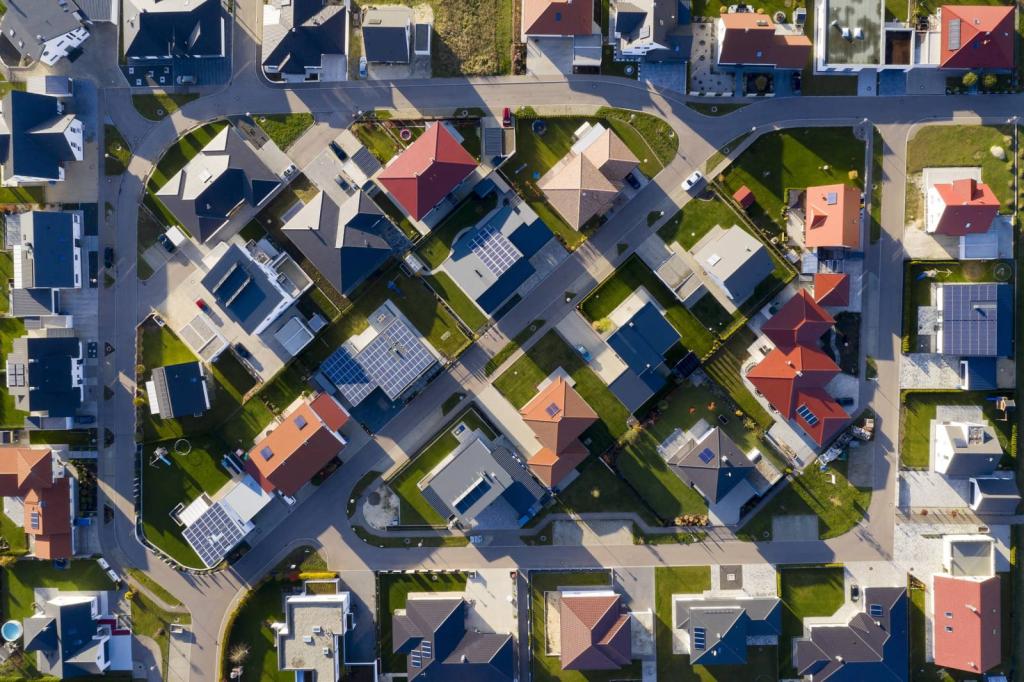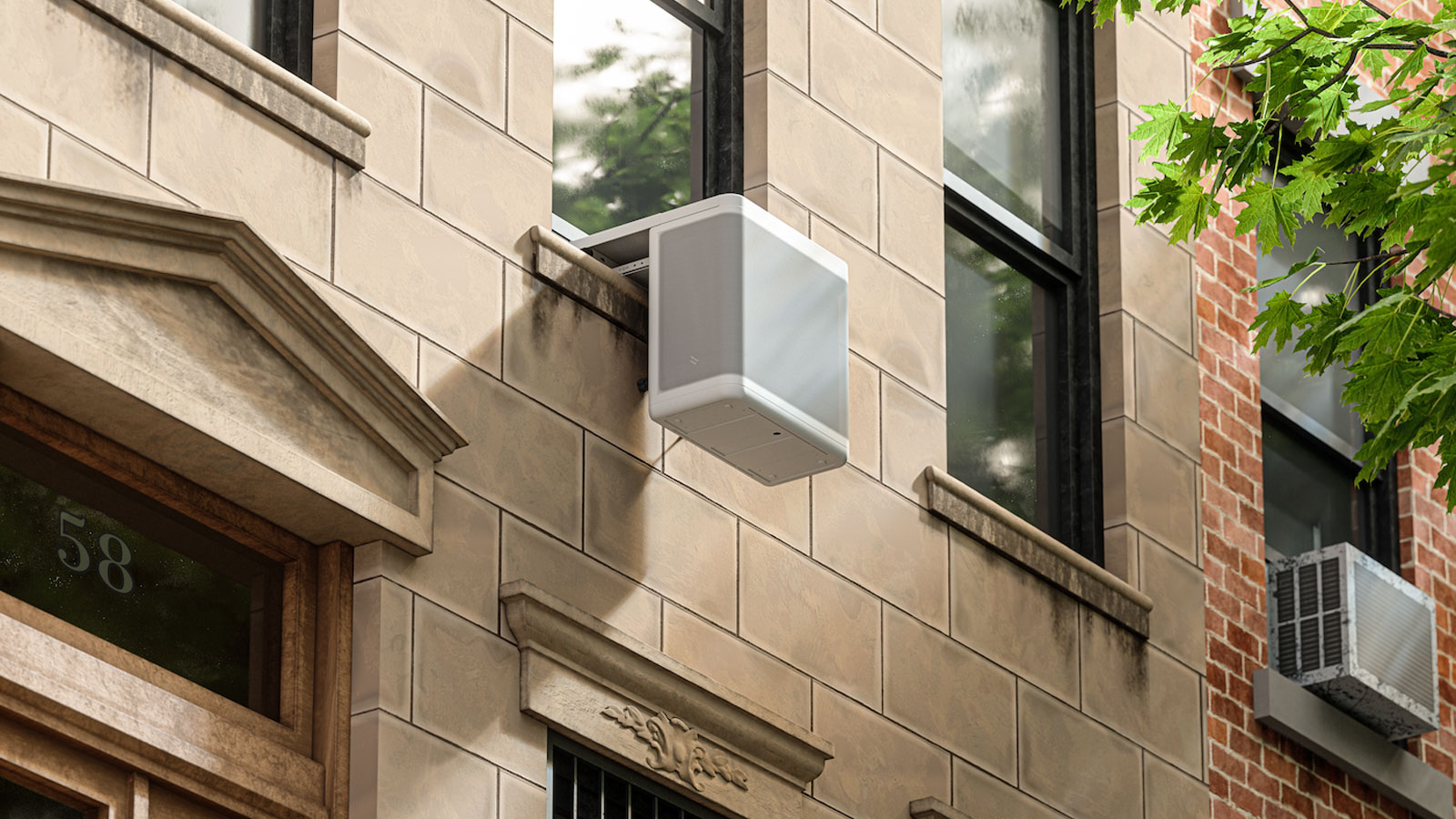In the late 1990s, the New York City public housing authority, NYCHA, challenged manufacturers to design a new energy-efficient refrigerator. While suburban homeowners had their pick of energy-saving fridges, no one was selling an efficient model that was small enough for a typical urban apartment. A 1995 New York Times article referred to the refrigerators NYCHA was using at the time as “the kitchen equivalent of gas guzzlers.”
Part of the problem was that fridge manufacturers didn’t see a market. There was no incentive for the average landlord to spend extra money on efficient appliances because they didn’t pay the electricity bills. But NYCHA both bought fridges and paid the bills. So the agency worked with the New York Power Authority, a public electric utility that serves NYCHA buildings, to hold a contest. They promised the winner a minimum purchase of 20,000 units.
Maytag, a smaller player at the time, won with a fridge called “the Magic Chef” that would cut energy consumption in half compared to existing NYCHA fridges and was priced below comparable models. Ultimately, the agencies partnered with other public housing authorities in the region to place bulk orders, lowering the cost even more.
Now, NYCHA is trying to repeat this success story with a new contest challenging manufacturers to invent an easy-to-install space heating system that doesn’t heat up the planet.
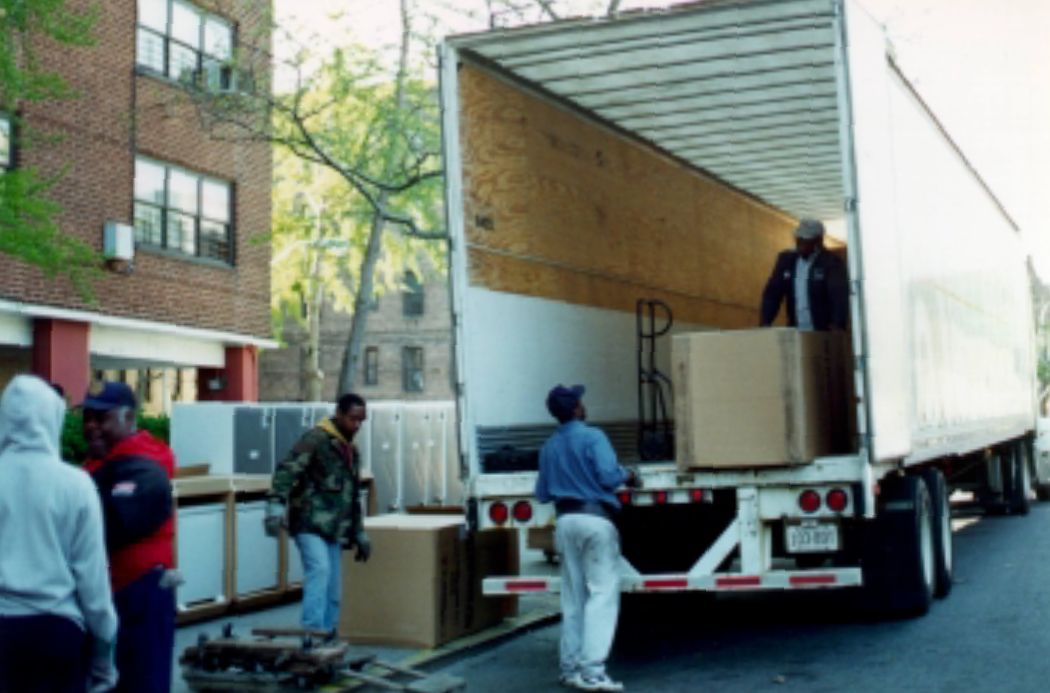
NYCHA is the largest public housing authority in the country, overseeing more than 300 buildings that contain 177,000 apartments. Under New York City law, the agency must cut greenhouse gas emissions from these buildings by 80 percent by 2050, and 70 to 75 percent of its emissions come from old steam heat systems with boilers that run on natural gas. To comply, the agency aims to replace many of them with heat pumps, fully electric space heating appliances that are much more energy efficient than boilers and furnaces and do not directly produce carbon emissions.
Heat pumps work by absorbing heat from the outside air, even on cold days, and pumping it indoors. They can also run in reverse, providing cooling in the summer and eliminating the need for an air conditioner. While they have existed for decades, earlier models were more suitable for mild climates, and only recently has the technology advanced to the point that it works well in colder climates like New York City. Now, many cities aim to transition buildings to heat pumps to eliminate the major greenhouse gas and pollution footprint of natural gas and oil-based heating.
But while that plan sounds straightforward, installing heat pumps in existing buildings that aren’t designed for them can be complicated — and costly.
In 2020, NYCHA undertook its first big experiment installing heat pumps in seven apartments on the top floor of the Fort Independence Houses in the Bronx, a 21-story building with more than 300 residences. The agency had to hire engineers to do a structural analysis of the rooftop to ensure it could support the outdoor components, which can weigh several hundred pounds. It also had to coordinate plumbers, carpenters, and electricians to install tubing filled with refrigerant, a chemical that transports thermal energy, between those outdoor components and the indoor units that were mounted on apartment walls. The installation required taking down parts of the ceiling and navigating residents’ furniture and other unforeseen obstacles like built-in cabinets. It took about 10 days per apartment, was disruptive to residents, and was generally an administrative nightmare.
“Each apartment was a story,” Jordan Bonomo, a program manager at NYCHA, told Grist. Those stories had a moral: “We quickly realized that while we like the technology, we couldn’t possibly scale that effort across our portfolio,” Bonomo said.
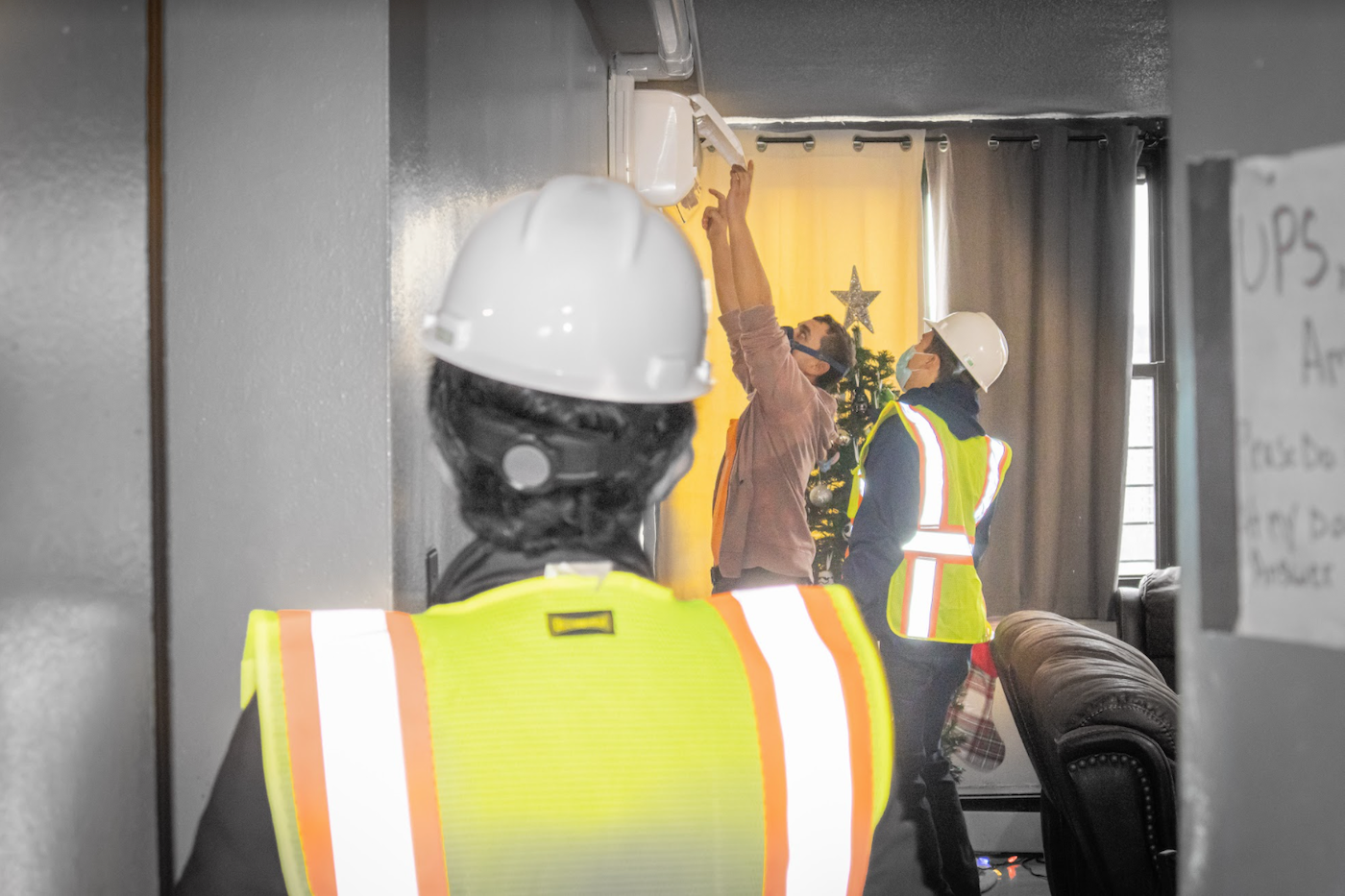

Despite that conclusion, NYCHA didn’t give up on heat pumps. “The only way that we can reduce our emissions by 80 percent within any of our lifetimes really is by electrifying our heating and hot water,” Bonomo said. Instead, the project inspired the agency to hatch a new plan: Could it once again use its buying power to lure manufacturers into developing a new product?
In December, NYCHA partnered with NYPA and the New York State Energy and Research Development Authority to launch the Clean Heat for All Challenge. The contest asks manufacturers to design a heat pump that can simply be installed in window frames, like an air conditioner. The agencies promise to put $263 million toward the purchase and installation of up to 24,000 units of the winning model, along with window replacements and other related heating repairs.*
Officials have high hopes for this prospective product. Keith Hayes, the senior vice president of clean energy solutions at NYPA, said it could make carbon-free heating accessible not only for NYCHA but for thousands of apartment building owners — especially owners of buildings with low-income tenants — who can’t or won’t invest in the work that traditional heat pumps require. “We really see ourselves moving the market here,” said Hayes.
Another potential benefit of the new heat pumps is that they would give NYCHA tenants the power to control the temperature of their apartments. Taylor Morton, the director of environmental health and education at the NYC-based environmental justice nonprofit WE ACT, who manages the organization’s NYCHA Healthy Homes Campaign, said public housing residents want more ownership over their apartments and agency over decisions like temperature. Since the boiler systems are centrally controlled, if it gets too hot or too cold in an apartment, there’s nothing tenants can do other than crack a window and let the heat seep out, or contact building management and wait for repairs. NYCHA heating systems fail frequently.
Morton thought the new heat pumps sounded promising but worries about the agency focusing too much on long-term goals while residents are suffering in freezing apartments today. “We haven’t always seen follow-through with NYCHA,” they added.
The Clean Heat for All Challenge asks companies to design a window heat pump that costs no more than $3,000, can operate when the temperature outside is 0 degrees Fahrenheit or lower, and can be installed in less than two hours. Entrants will get extra points for quieter systems that minimize window light obstruction, and if they can deliver the heat pumps on an accelerated timeline.
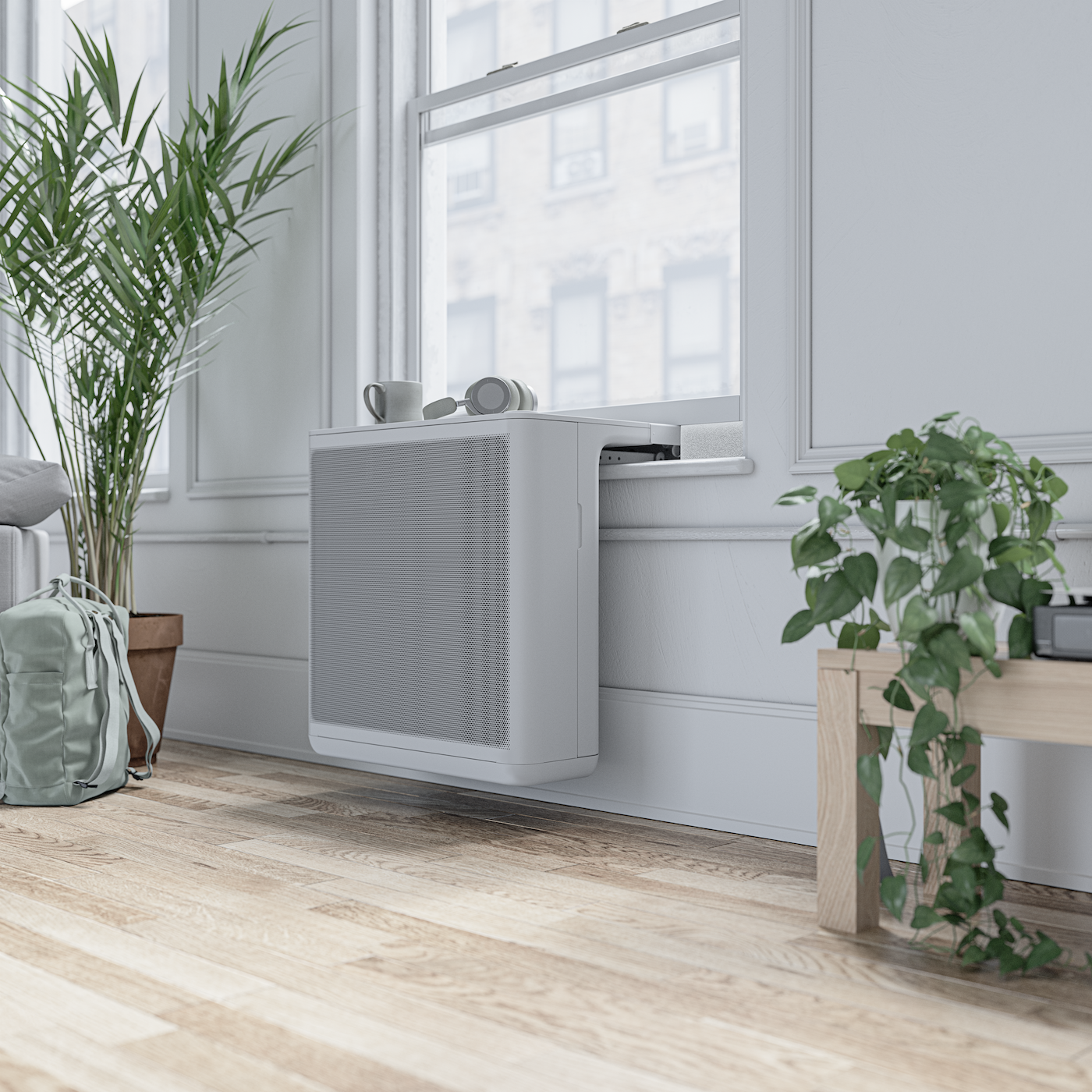
NYCHA aims to select winners by early summer and give them up to 18 months, or until around fall 2023, to produce 30 prototypes. The goal is to test those through the heating season and put in the order for the rest of the 24,000 units by early 2025. The agency could also again partner with other public housing authorities to place bulk orders. NYCHA has obtained expressions of interest from agencies in Jersey City, Boston, and Seattle that together oversee almost 24,000 apartments.
There are already a few companies making products that are close to qualifying. A company called Ephoca makes a model that mounts on the wall and only requires two small holes through the external wall of the building to install. Bonomo said NYCHA rigged one of them into a window in a building supervisor’s office and that it was working well. Another company called Gradient is developing a sleek saddle-shaped heat pump that rests over the windowsill without blocking the window. Gradient also advertises the use of a more sustainable refrigerant — the chemicals are typically powerful greenhouse gases that can be detrimental to the climate if they leak.
Vince Romanin, the CEO of Gradient, told Grist the company intends to participate and that he is excited about the contest. “This is a signal from NYCHA that there could be a better way to get these into buildings,” he said. “If we can streamline the install process, make something that’s easier to use from the customer’s perspective and that doesn’t require any professional labor to install, we can do this much faster.”
There’s one potential catch. Sean Brennan, the director of research at the sustainable building nonprofit Urban Green Council, warned that it will be hard to design something that matches the efficiency of traditional heat pump technology. Since heat pumps absorb heat from the air — and since in the winter, the heat in the air is more diffuse — the larger the area of the device that is exposed, the more efficiently it can operate. Designing a unit for the window puts physical limitations on the total area that can be exposed to the outdoors. The NYCHA contest specifies a minimum efficiency requirement that is in line with industry standards for heat pumps in the Northeast, but there are many models available today that surpass that minimum, according to a list of heat pump models maintained by the Northeast Energy Efficiency Partnership.
Brennan said that if all of New York City decided to electrify with these window units, it would be a problem in terms of power demand. But he believes they are a promising solution for the next 10 to 15 years while the industry works on finding easier ways to do full building heat pump retrofits. His only other concern was that if NYCHA didn’t pair the new heat pumps with better insulation, some residents may find themselves missing their radiators. “The worst thing that could happen is that people are unhappy with their comfort and then they buy a resistance space heater,” he said, pointing to the recent deadly fire in a Bronx apartment building that was caused by a portable space heater. (Disclosure: I previously worked for Urban Green Council as a contract copy-editor.)
NYCHA is well known for failing to provide adequate heating for residents, among a litany of other failures, including addressing lead paint, mold, asbestos, and pests. Two years ago, after a federal investigation into mismanagement and general dysfunction at the agency, NYCHA signed an agreement with the U.S. Department of Housing and Urban Development establishing deadlines for the agency to remediate certain hazards, including unreliable heat.
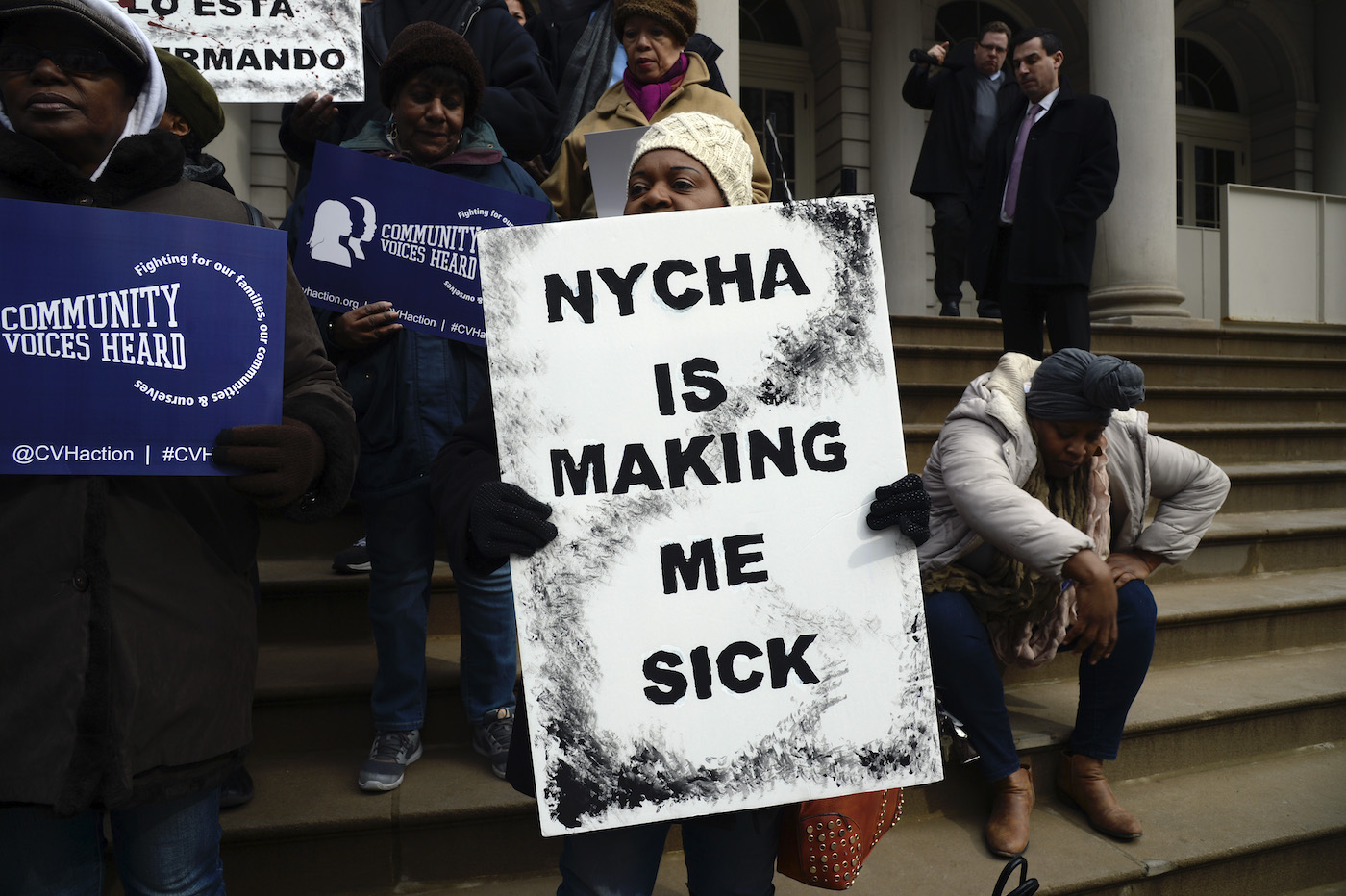
But the agency’s progress has been hindered by the same central issue that has dogged it for years: inadequate funding. NYCHA estimates that it would cost $40 billion to complete repairs on all buildings, systems and grounds, but the agency’s five-year capital spending plan only provides for about $7.5 billion. Vlada Kenniff, NYCHA’s vice president for energy and sustainability, said the agency hasn’t received federal funding for capital improvements for two to three decades now. Kenniff said the agency is holding out hope that Congress will pass the Build Back Better Act, the social spending and climate bill that is stalled in the Senate, an earlier version of which included $65 billion to repair public housing.
Marquis Jenkins, an organizer who grew up in public housing and runs a group called Residents to Preserve Public Housing, said fault also lies with the state, which has provided only about $650 million to the agency over the last five years. Jenkins’ group is asking Governor Kathy Hochul to allocate $3.4 billion to NYCHA for capital repairs in the 2023 state budget, and to maintain that baseline funding in the years following.
Kenniff said that at a minimum, the agency plans to install new weatherized windows along with the heat pumps, but that it could potentially do more if the Build Back Better Act passes. She and Bonomo also said NYCHA would keep the existing heating systems in place as backup heating, at least at first. The agency is also not abandoning plans to pilot traditional heat pump technology — it’s currently working on another project to install heat pumps in an entire 20-story building on Amsterdam Avenue in Manhattan.
“I think it’s fair to say that the majority of our systems are at the end of their useful lives,” said Kenniff. Today, when funding does trickle in, it’s usually calculated for one-for-one boiler replacements, since that’s the most cost-effective option. She said the goal of the contest was to be able to make an argument to spend that money on heat pumps instead. “We want to be able to say, ‘You’re not going to have to go and find additional millions of dollars for an electrification option. You can affordably electrify the building now.’”
*Correction: An earlier version of this story misstated how the agencies plan to spend the $263 million for the Clean Heat for All Challenge. This story has also been updated to clarify the source of information for top heat pump models’ efficiency.
